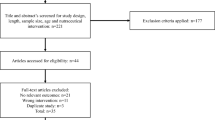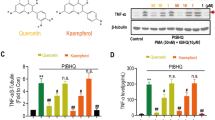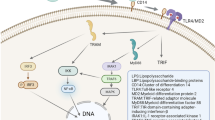Abstract
Depression is an emotional disorder that causes mental and physical changes, and has limited pharmacotherapy. Tannic acid (TA) is a polyphenol with previously described antioxidant and neuroprotective properties. The aim of this study was to evaluate the effects of TA on lipopolysaccharide (LPS)-induced depressive-like behavior, as well as oxidative stress parameters and TNF-α levels in the brains of mice. Animals were pretreated once daily, with TA (30 or 60 mg/kg), fluoxetine (20 mg/kg) or vehicle for 7 days. On the 7th day, the animals received a single injection of LPS (830 μg/kg). After 24 h, open field, forced swimming, tail suspension, and splash tests were conducted. The endotoxin induced depressive-like behavior in these mice and this was attenuated by TA. In the cerebral cortex, hippocampus, and striatum, LPS increased lipid peroxidation and reactive oxygen species production, and this was also prevented by TA administration. TA treatment also prevented a decrease in catalase activity within the striatum. Further, LPS administration caused increased levels of TNF-α in all brain structures, and this was prevented in the cortex by TA treatment. In conclusion, TA shows many neuroprotective properties, with demonstrated antioxidant, anti-inflammatory and antidepressant effects in this animal model of acute depressive-like behavior. Therefore, this compound could provide an alternative therapeutic approach for the treatment of depression.







Similar content being viewed by others
References
Krishnadas R, Cavanagh J (2012) Depression: an inflammatory illness? J Neurol Neurosurg Psychiatry 83:495–502
Grahek I, Shenhav A, Musslick S, Krebs RM, Koster EHW (2019) Motivation and cognitive control in depression. Neurosci Biobehav Rev 102:371–381
Adebesin A, Adeoluwa OA, Eduviere AT, Umukoro S (2017) Methyl jasmonate attenuated lipopolysaccharide-induced depressive like behaviour in mice. J Psychiatr Res 94:29–35
Sulakhiya K, Kumar P, Jangra A, Dwivedi S, Hazarika NK, Baruah CC, Lahkar M (2014) Honokiol abrogates lipopolysaccharide-induced depressive like behavior by impeding neuroinflammation and oxido-nitrosative stress in mice. Eur J Pharmacol 744:124–131
Umukoro S, Adebesin A, Agu G, Omorogbe O, Asehinde SB (2018) Antidepressant-like activity of methyl jasmonate involves modulation of monoaminergic pathways in mice. Adv Med Sci 63:36–42
Moylan S, Berk M, Dean OM, Samuni Y, Williams LJ, O’Neil A, Hayley AC, Pasco JA, Anderson G, Jacka FN, Maes M (2014) Oxidative & nitrosative stress in depression: Why so much stress? Neurosc Biobehav Rev 45:46–62
Maes M, Galecki P, Chang YS, Berk M (2011) A review on the oxidative and nitrosative stress (O&NS) pathways in major depression and their possible contribution to the (neuro)degenerative processes in that illness. Prog Neuropsychopharmacol Biol Psychiatry 35:676–692
Schieber M, Chandel NS (2014) ROS funzction in redox signaling and oxidative stress. Curr Biol 24:453–462
Maurya PK, Noto C, Rizzo LB, Rios AC, Nunes SO, Barbosa DS, Sethi S, Zeni M, Mansur RB, Maes M, Brietzke E (2016) The role of oxidative and nitrosative stress in accelerated aging and major depressive disorder. Prog Neuropsychopharmacol Biol Psychiatry 65:134–144
Furtado M, Katzman MA (2015) Examining the role of neuroinflammation in major depression. Psychiatry Res 229:27–36
Zhao Y, Wang Q, Jia M, Fu S, Pan J, Chu C, Liu X, Liu X, Liu Z (2019) (+)-Sesamin attenuates chronic unpredictable mild stress-induced depressive-like behaviors and memory deficits via suppression of neuroinflammation. J Nutri Biochem 64:61–71
Rodrigo R, Gil-Becerra D (2014) Implications of Polyphenols on Endogenous Antioxidant Defense Systems in Human Diseases. In: Preedy VR, Zibadi S (eds) Watson RR. Polyphenols in Human Health and Disease, Academic Press, Cambridge pp, pp 201–217
Vauzour D, Kerr J, Czank C (2014) Plant Polyphenols as Dietary Modulators of Brain Functions. In: Preedy VR, Zibadi S (eds) Watson RR. Polyphenols in Human Health and Disease, Academic Press, pp 357–370
Zhu WL, Shi HS, Wei YM, Wang SJ, Sun CY, Ding ZB, Lu L (2012) Green tea polyphenols produce antidepressant-like effects in adult mice. Pharmacol Res 65:74–80
Lopes GK, Schulman HM, Hermes-Lima M (1999) Polyphenol tannic acid inhibits hydroxyl radical formation from Fenton reaction by complexing ferrous ion. Biochim Biophys Acta 1472:142–152
Gerzson MFB, Pacheco SM, Soares MSP, Bona NP, Oliveira PS, Azambuja JH, da Costa P, Gutierres JM, Carvalho FB, Morsch VM, Spanevello RM, Stefanello FM (2019) Effects of tannic acid in streptozotocin-induced sporadic Alzheimer’s Disease: insights into memory, redox status, Na+, K+-ATPase and acetylcholinesterase activity. Arch Psysiol Biochem 9:1–8
Fakhoury M (2015) New insights into the neurobiological mechanisms of major depressive disorders. Gen Hosp Psychiatry 37:172–177
Liu W, Ge T, Leng Y, Pan Z, Fan J, Yang W, Cui R (2017) The role of neural plasticity in depression: from hippocampus to prefrontal cortex. Neural Plast 2017:6871089
Báez-Mendonza R, Schultz W (2013) The role of striatum in social behavior. Front Neurosci 7:233
Zhu L, Nang C, Luo F, Pan H, Zhang K, Liu J, Zhou R, Gao J, Chang X, He H, Qiu Y, Wang J, Long H, Liu Y, Yan T (2016) Esculetin attenuates lipopolysaccharide (LPS)-induced neuroinflammatory processes and depressive-like behavior in mice. Physiol Behav 163:184–192
Porsolt RD, Bertin A, Jalfre M (1977) Behavioral despair in mice: a primary screening test for antidepressants. Arch Int Pharmacodyn Ther 229:327–336
Steru L, Chermat R, Thierry B, Simon P (1985) The tail suspension test: a new method for screening antidepressants in mice. Psycopharmacology 85:367–370
Yalcin I, Aksu F, Belzung C (2005) Effects of desipramine and tramadol in a chronic mild stress model in mice are altered by yohimbine but not by pindolol. Eur J Pharmacol 514:165–174
Ali SF, LeBel CP, Bondy SC (1992) Reactive oxygen species formation as a biomarker of methylmercury and trimethyltin neurotoxicity. Neurotoxicology 13:637–648
Aksenov MY, Markesbery WR (2001) Changes in thiol content and expression of glutathione redox system genes in the hippocampus and cerebellum in Alzheimer’s disease. Neurosci Lett 302:141–145
Esterbauer H, Cheeseman KH (1990) Determination of aldehydic lipid peroxidation products: malonaldehyde and 4-hydroxynonenal. Methods Enzymol 186:407–421
Stuehr DJ, Nathan CF (1989) Nitric oxide. A macrophage product responsible for cytostasis and respiratory inhibition in tumor target cells. J Exp Med 169:1543–1555
Aebi H (1984) Catalase in vitro. Methods Enzymol 105:121–126
Misra HP, Fridovich I (1972) The role of superoxide anion in the autoxidation of epinephrine and a simple assay for superoxide dismutase. J Biol Chem 247:3170–3175
Habig WH, Pabst MJ, Jakoby WB (1974) Glutathione S-transferases. The first enzymatic step in mercapturic acid formation. J Biol Chem 249:7130–7139
Lowry OH, Rosebrough NJ, Farr AL, Randall RJ (1951) Protein measurement with the Folin phenol reagent. J Biol Chem 193:265–275
Bradford M (1976) A rapid and sensitive method for the quantitation of microgram quantities of protein utilizing the principle of protein– dye binding. Anal Biochem 72:248–254
O’Connor JC, Lawson MA, André C, Moreau M, Lestage J, Castanon N, Kelley KW, Dantzer R (2009) Lipopolysaccharide-induced depressive-like behavior is mediated by indoleamine 2,3-dioxygenase activation in mice. Mol Psychiatry 14:511–522
Taniguti EH, Ferreira YS, Stupp IJV, Fraga-Junior EB, Doneda DL, Lopes L, Rios-Santos F, Lima E, Buss ZS, Viola GG, Vandresen-Filho S (2019) Atorvastatin prevents lipopolysaccharide-induced depressive-like behaviour in mice. Brain Res Bull 146:279–286
Café-Mendes CC, Garay-Malpartida HM, Malta MB, Scavone C, Ferreira ZS, Markus RP, Marcourakis T (2017) Chronic nicotine treatment decreases LPS signaling through NF-κB and TLR-4 modulation in the hippocampus. Neurosci Lett 636:218–224
Sens J, Schneider E, Mauch J, Schaffstein A, Mohamed S, Fasoli K, Saurine J, Britzokali A, Thelen C, Pitychoutis PM (2017) Lipopolysaccharide administration induces sex-dependent behavioural and serotonergic neurochemical signatures in mice. Pharmacol Biochem Behav 153:168–181
Gawali NB, Bulani VD, Chowdhury AA, Deshpande PS, Nagmoti DM, Juvekar AR (2016) Agmatine ameliorates lipopolysaccharide induced depressive-like behaviour in mice by targeting the underlying inflammatory and oxido-nitrosative mediator. Pharmacol Biochem Behav 149:1–8
Dalmagro AP, Camargo A, Rodrigues ALS, Zeni ALB (2019) Involvement of PI3K/Akt/GSK-3β signaling pathway in the antidepressant-like and neuroprotective effects of Morus nigra and its major phenolic, syringic acid. Chem Biol Interact 314:1–11
Gould TD, Dao DT, Kovacsics CE (2009) The open field test. In: Gould TD (ed) Mood and anxiety related phenotypes in mice, 1st edn. Springer, Basel, pp 1–20
McCusker RH, Kelley KW (2013) Immune-neural connections: how the immune system’s response to infectious agents influences behavior. J Exp Biol 216:84–98
Karshikoff B (2015) Sickness behavior: immune system influences on brain and behavior. Thesis, Karolinska Institutet
Jiang W, Chen Q, Li P, Lu Q, Pei X, Sun Y, Wang G, Hao K (2017) Magnesium Isoglycyrrhizinate attenuates lipopolysaccharide-induced depressive-like behavior in mice. Biomed Pharmacother 86:177–184
Wang X, Zhu L, Hu J, Guo R, Ye S, Liu F, Wang D, Zhao Y, Hu A, Wang X, Guo K, Lin L (2020) FGF21 Attenuated LPS-Induced Depressive-Like Behavior via Inhibiting the Inflammatory Pathway. Front Pharmacol 11:154
Campos-Bedolla P, Walter FR, Veszelka S, Deli MA (2014) Role of the blood-brain barrier in the nutrition of the central nervous system. Arch Med Res 45:610–638
Serrano J, Puupponen-Pimiä R, Dauer A, Aura AM, Saura-Calixto F (2009) Tannins: current knowledge of food sources, intake, bioavailability and biological effects. Mol Nutr Food Res 53:310–329
Mori T, Rezai-Zadeh K, Koyama N, Arendash GW, Yamaguchi H, Kakuda N, Horikoshi-Sakuraba Y, Tan J, Town T (2012) Tannic acid is a natural B-secretase inhibitor that prevents cognitive impairment and mitigates Alzheimer-like pathology in transgenic mice. J Biol Chem 287:6912–6927
Gerzson MFB, Bona NP, Soares MSP, Teixeira FC, Rahmeier FL, Carvalho FB, da Cruz FM, Onzi G, Lenz G, Gonçales RA, Spanevello RM, Stefanello FM (2020) Tannic acid ameliorates STZ-Induced Alzheimer's Disease-like impairment of memory, neuroinflammation, neuronal death and modulates akt expression. Neurotox Res 37:1009–1017
Bona NP, Pedra NS, Azambuja JH, Soares MSP, Spohr L, Gelsleichter NE, Meine BM, Sekine FG, Mendonça LT, de Oliveira FH, Braganhol E, Spanevello RM, da Silveira EF, Stefanello FM (2020) Tannic acid elicits selective antitumoral activity in vitro and inhibits cancer cell growth in a preclinical model of glioblastoma multiforme. Metab Brain Dis 35:283–293
Migliore L, Coppede F (2009) Environmental-induced oxidative stress in neurodegenerative disorders and aging. Mutat Res 31:73–84
Chang CC, Lee CT, Lan TH, Ju PC, Hsieh YH, Lai TJ (2015) Effects of antidepressant treatment on total antioxidant capacity and free radical levels in patients with major depressive disorder. Psychiatry Res 230:575–580
Gebicka L, Krych-Madej J (2019) The role of catalases in the prevetion/promotion of oxidative stress. J Inorg Biochem 197:110699
Dasari S, Gonuguntla S, Ganjayi MS, Bukke S, Sreenivasulu B, Meriga B (2018) Genetic polymorphism of gluthatione S-transferases: Relevance to neurological disorders. Pathophysiology 25:285–292
Andrade RG Jr, Ginani JS, Lopes GKB, Dutra F, Alonso A, Hermes-Lima M (2006) Tannic acid inhibits in vitro iron-dependent free radical formation. Biochimie 88:1287–1296
Moylan S, Maes M, Wray NR, Berk M (2013) The neuroprogressive nature of major depressive disorder: pathways to disease evolution and resistance, and therapeutic implications. Mol Psychiatry 18:595–606
Allen J, Romay-Tallon R, Brymer KJ, Caruncho HJ, Kalynchuk LE (2018) Mitochondria and mood: mitochondrial dysfunction as a key player in the manifestation of depression. Front Neurosci 12:386
Czarny P, Wigner P, Galecki P, Sliwinski T (2018) The interplay between inflammation, oxidative stress, DNA damage, DNA repair and mitochondrial dysfunction in depression. Prog Neuropsychopharmacol Biol Psychiatry 80:309–321
El-Aal HAHMA (2012) Lipid peroxidation end-products as a key of oxidative stress: effect of antioxidant on their production and transfer of free radicals. In: Catala A (ed) Lipid peroxidation. IntechOpen, London, pp 63–88
Mazereeuw G, Herrmann N, Andreazza AC, Khan MM, Lanctôt KL (2015) A meta-analysis of lipid peroxidation markers in major depression. Neuropsychiatr Dis Treat 11:2479–2491
Mello BSF, Chaves Filho AJM, Custódio CS, Cordeiro RC, Miyajima F, de Sousa FCF, Vasconcelos SMM, de Lucena DF, Macedo D (2018) Sex influences in behavior and brain inflammatory and oxidative alterations in mice submitted to lipopolysaccharide-induced inflammatory model of depression. J Neuroimmunol 320:133–142
Song D, Zhao J, Deng W, Liao Y, Hong X, Hou J (2018) Tannic acid inhibits NLRP3 inflammasome-mediated IL-1β production via blocking NF-κB signaling in macrophages. Biochem Biophys Res Commun 503:3078–3085
Wu Y, Zhong L, Yu Z, Qi J (2019) Anti-neuroinflammatory effects of tannic acid against lipopolysaccharide-induced BV2 microglial cells via inhibition of NF-κB activation. Drug Dev Res 80:262–268
Lingappan K (2018) NF-κB in oxidative stress. Curr Opin Toxicol 7:81–86
Acknowledgements
The Brazilian research funding agencies Fundação de Amparo à pesquisa do Estado do Rio Grande do Sul, Conselho Nacional de Desenvolvimento Científico e Tecnológico and Coordenação de Aperfeiçoamento de Pessoal de Nível Superior (Finance code 001) supported this study.
Author information
Authors and Affiliations
Corresponding authors
Ethics declarations
Conflict of interest
The authors declare that there are no conflicts of interest in this study.
Additional information
Publisher's Note
Springer Nature remains neutral with regard to jurisdictional claims in published maps and institutional affiliations.
Rights and permissions
About this article
Cite this article
Luduvico, K.P., Spohr, L., Soares, M.S.P. et al. Antidepressant Effect and Modulation of the Redox System Mediated by Tannic Acid on Lipopolysaccharide-Induced Depressive and Inflammatory Changes in Mice. Neurochem Res 45, 2032–2043 (2020). https://doi.org/10.1007/s11064-020-03064-5
Received:
Revised:
Accepted:
Published:
Issue Date:
DOI: https://doi.org/10.1007/s11064-020-03064-5




